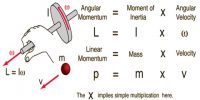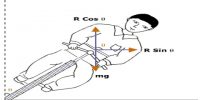Objects in the Solar system:
(i) Asteroids
Asteroids are small heavenly bodies which orbit round the Sun between the orbits of Mars and Jupiter. They are the pieces of much larger planet which broke up due to the gravitational effect of Jupiter. About 1600 asteroids are revolving around the Sun. The largest among them has a diameter of about 700 km is called Ceres. It circles the Sun once in every 41/2 years.
(ii) Comets
A comet consists of a small mass of rock-like material surrounded by large masses of substances such as water, ammonia and methane. These substances are easily vapourised. Comets move round the Suni in highly elliptical orbits and most of the time they keep far away from the Sun. As the comet approaches the Sun, it is heated by the Sun’s radiant energy and vapourises and forms a head of about 10000 km in diameter. The comet also develops a tail pointing away from the Sun. Some comets are seen at a fixed regular intervals of time. Halley’s comet is a periodic comet which made its appearance in 1910 and in 1986. It would appear again in 2062.
(iii) Meteors and Meteorites
The comets break into pieces as they approach very close to the Sun. When Earth’s orbit cross the orbit of comet, these broken pieces fall on the Earth. Most of the pieces are burnt up by the heat generated due to friction in the Earth’s atmosphere. They are called meteors (shooting stars). We can see these meteors in the sky on a clear moonless night.
Some bigger size meteors may survive the heat produced by friction and may not be completely burnt. These blazing objects which manage to reach the Earth are called meteorites.
The formation of craters on the surface of the moon. Mercury and Mars is due to the fact that they have been bombarded by large number of meteorites.













